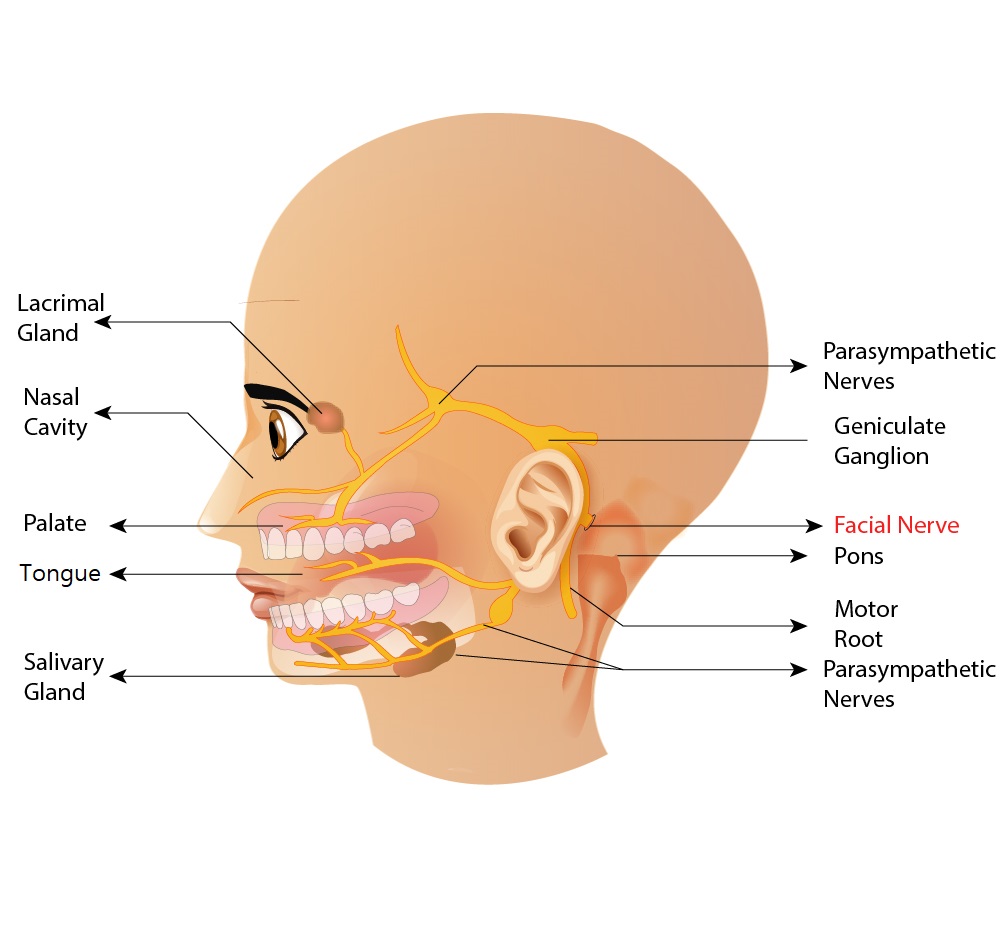Facial muscles are different to the muscles in the rest of the body because they attach to the skin of the face as well as attaching to each other. Muscles in the rest of our body attach to bone and contract or straighten to move our joints. For example, the biceps muscle contracts to bend the elbow, and the triceps muscle contracts to straighten it again. Because the facial muscles attach to the skin they can move in any direction. Skin is very light and easy to move so the muscles can create facial expressions to show our emotions even when they only do tiny gentle movements.
There are many muscles in the face, at least 23 on each side, which between them are capable of over 2000 expressions which makes the face a very complex system in comparison to the rest of the body. The face also has emotional input which means it responds to the emotions we are feeling. No other muscles in the body do this. The information below outlines some of these facial muscles and just a few examples of their expressive function. The named muscle is highlighted in green and the arrows show the direction of muscle movement.
Diagram of the Facial Muscles

Key to facial muscles
- Procerus
- Corrugator
- Depressor Supercilii
- Orbicularis Oculi (inner ring = pretarsal portion)
- Zygomaticus Major
- Levator Labii Superioris
- Masseter
- Levator Anguli Oris
- Buccinator
- Risorius
- Depressor Labii Inferioris
- Platysma
- Mentalis
- Depressor Anguli Oris
- Orbicularis Oris
- Depressor Septi
- Zygomaticus Minor
- Levator Labii Alaeque Nasi
- Orbicularis Oculi (Outer ring = orbital portion)
- Orbicularis Oculi (Middle ring = preseptal portion)
- Ethmoid Sinus
- Temporalis
- Frontalis
- Epicranial Aponeurosis
FRONTALIS MUSCLE (FOREHEAD MUSCLE)
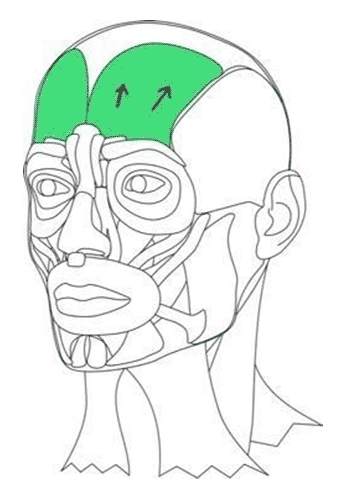
The frontalis muscle raises the eyebrows and creates wrinkles in the forehead by pulling upwards. For example, when you express surprise or shock.
CORRUGATOR & DEPRESSOR SUPERCILII (FROWN MUSCLES)
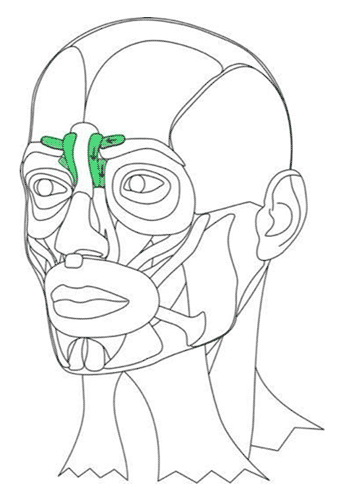
The corrugator and depressor supercilii muscles pull the eyebrows down and inwards to create the frown expression.
ORBICULARIS OCULI (EYE CLOSURE MUSCLE)
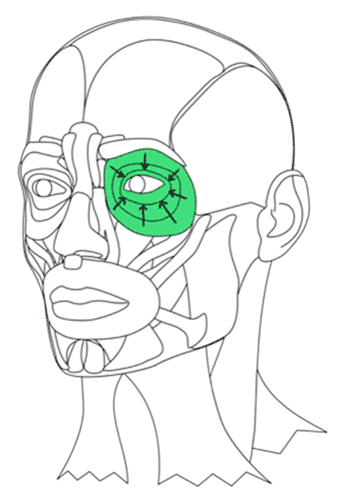
The orbicularis oculi muscles are responsible for closing our eyes. They are split into three rings. The inner ring is called the pretarsal portion and this part of the muscle helps with blink and closing the eyes for sleep. The middle ring is called the preseptal portion and this part of the muscle helps with blink, closing the eyes for sleep and tight eye closure. The outer ring is called the orbital portion and this part helps with gentle eye closure and tight eye closure. The eye muscles also act as pumps to draw tears from the tear ducts up to the surface of the eye.
NASALIS
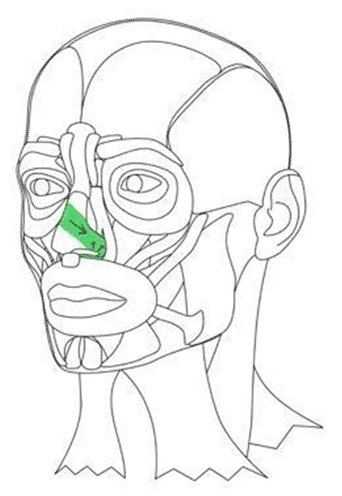
Nasalis muscle has two parts – the transverse part of the muscle compresses the nose and the alar part dilates the nostril.
LEVATOR MUSCLES (TOP LIP LIFTING MUSCLES)

There are three levator muscles that pull up the top lip when they contract. The first is right next to the nose, the second runs from the lip up towards the eye and the third runs straight up from the corner of the mouth towards the outer part of the eye. We use these muscles to wrinkle up the nose to show our top teeth, as in disgust, or to bare our teeth in an act of hostility.
ZYGOMATICUS MUSCLES (SMILE MUSCLES)
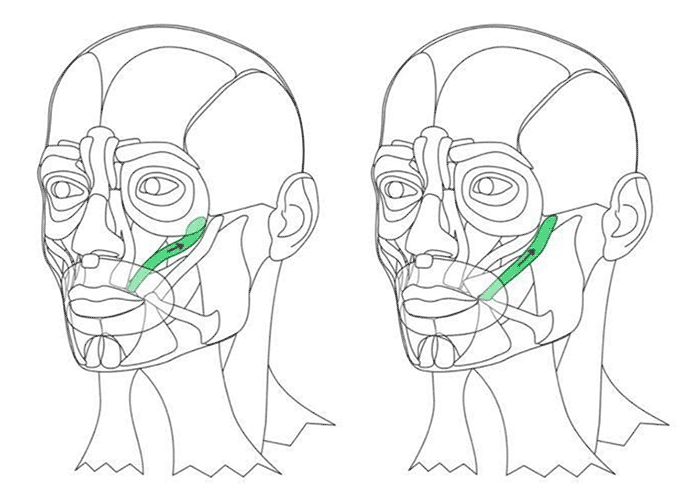
There are two zygomaticus muscles that allow you to smile when they contract. The main part of both muscles is right up in the cheek where the cheek bulges when you smile. We use these muscles particularly when we do a full or big smile.
RISORIUS MUSCLE
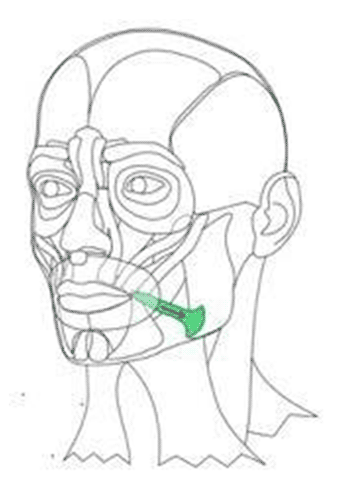
The risorius muscle pulls the corner of the mouth sideways. We use this muscle to express mild amusement or what is called a Mona Lisa smile so it is quite a small subtle expression.
BUCCINATOR (CHEEK MUSCLE)
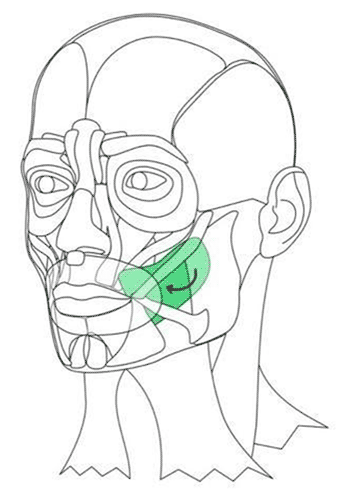
The Buccinator is one of the largest facial muscles and sits right on the inside of the cheek next to the teeth. It presses the cheek against the teeth which helps keep food between our teeth for chewing. It also participates in the expression of “smug satisfaction”.
LIP DEPRESSOR MUSCLES
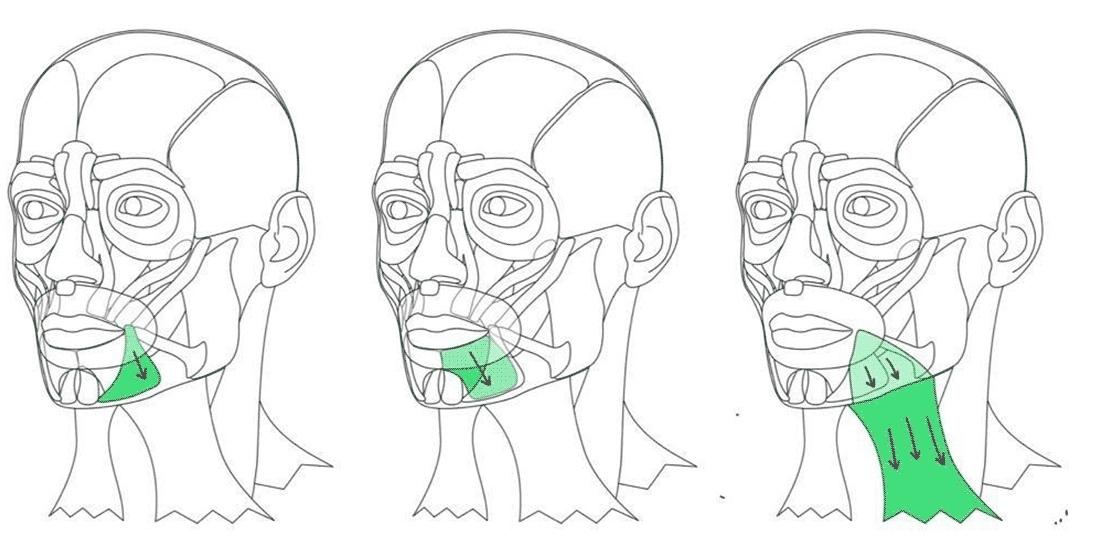
There are three lip depressor muscles which normally pull the lip and the corner of the mouth downwards. They are used to express sadness and disappointment or other more subtle emotions.
MENTALIS (CHIN MUSCLE)
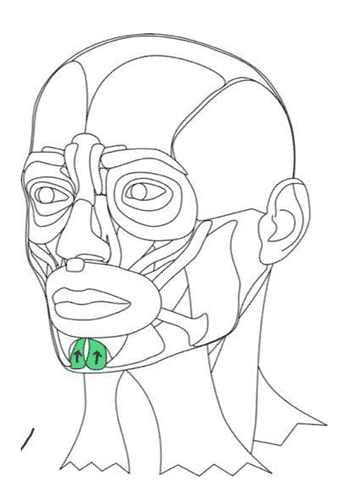
The mentalis muscle normally raises the chin.

